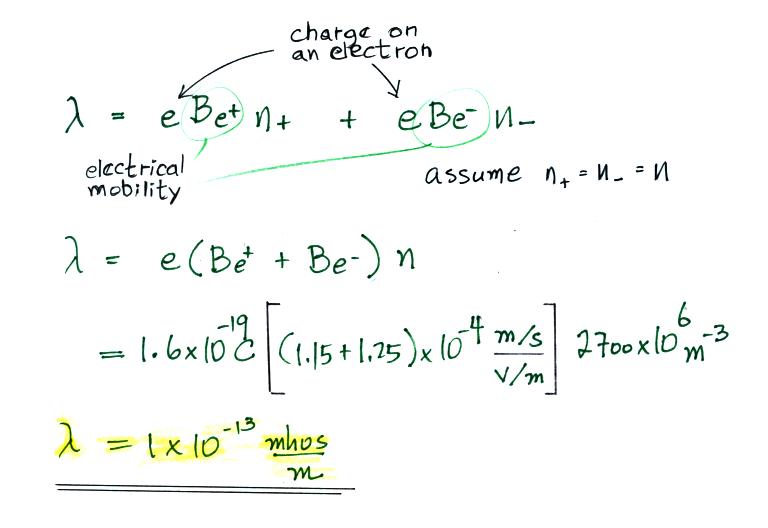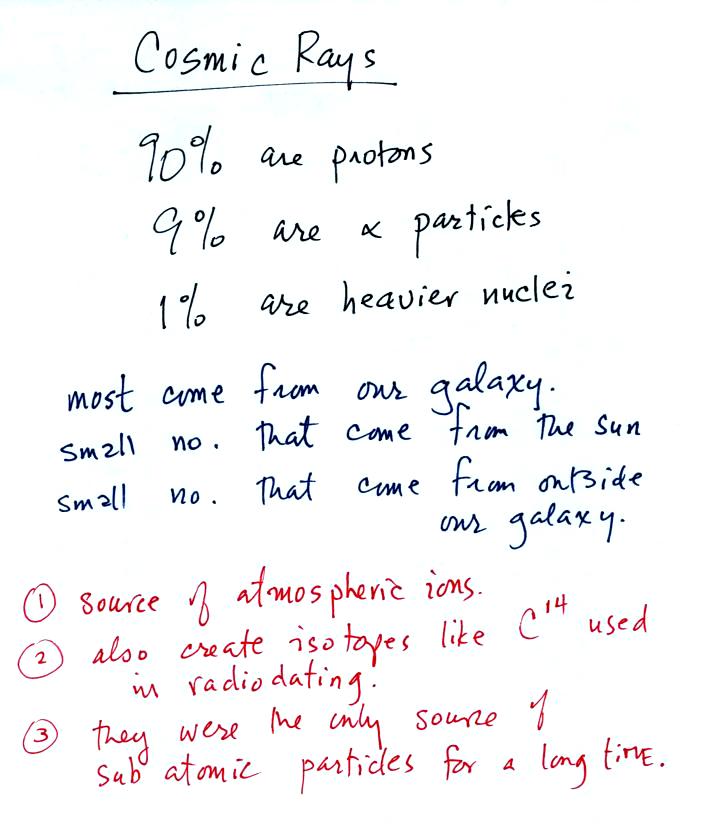
And some historical information (that was on a class handout). It really was the study of atmospheric electricity (studies of ionization of air) that lead to the discovery of cosmic radiation.
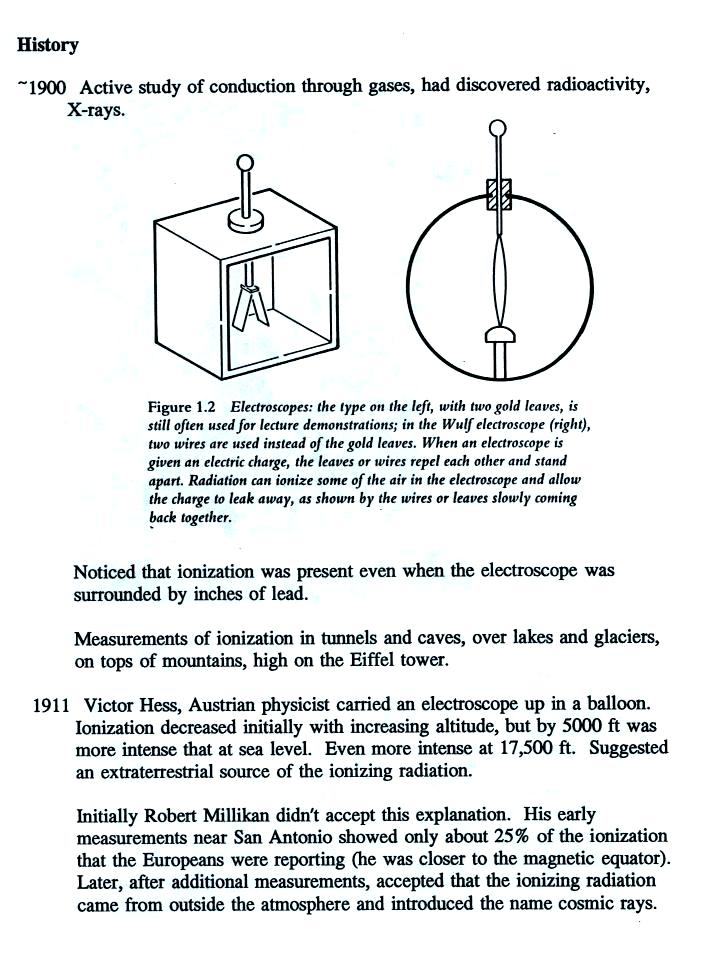

Cosmic ray intensity decreases at the geomagnetic equator because many of the incoming cosmic rays couple to and follow the earth's magnetic field lines to the magnetic poles.
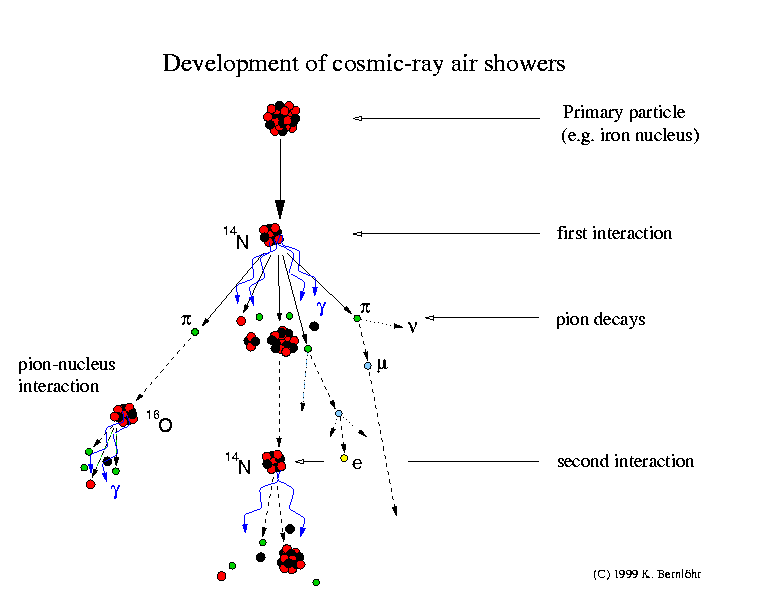
Cosmic-ray
air showers
Cosmic
rays
The earth is
hit by elementary particles and atomic
nuclei of very large energies. Most of
them are protons (hydrogen nuclei) and
all sorts of nuclei up to uranium
(although anything heavier than nickel
is very, very rare). Those are usually
meant when talking about cosmic
rays. Other energetic particles in the
cosmos are mainly electrons and
positrons, as well as gamma-rays and
neutrinos.
Interactions
and particle production
The
cosmic rays will hardly ever hit the
ground but will collide (interact) with
a nucleus of the air, usually several
ten kilometers high. In such collisions,
many new particles are usually created
and the colliding nuclei evaporate to a
large extent. Most of the new particles
are pi-mesons (pions). Neutral pions
very quickly decay, usually into two
gamma-rays. Charged pions also decay but
after a longer time. Therefore, some of
the pions may collide with yet another
nucleus of the air before decaying,
which would be into a muon and a
neutrino. The fragments of the incoming
nucleus also interact again, also
producing new particles.
The gamma-rays
from the neutral pions may also create new
particles, an electron and a positron, by
the pair-creation process. Electrons and
positrons in turn may produce more
gamma-rays by the bremsstrahlung
mechanism.
Shower
development
The number of
particles starts to increase rapidly as
this shower or cascade of particles moves
downwards in the atmosphere. On their way
and in each interaction the particles
loose energy, however, and eventually will
not be able to create new particles. After
some point, the shower maximum, more
particles are stopped than created and the
number of shower particles declines. Only
a small fraction of the particles usually
comes down to the ground. How many
actually come down depends on the energy
and type of the incident cosmic ray and
the ground altitude (sea or mountain
level). Actual numbers are subject to
large fluctuations.
In fact, from
most cosmic rays nothing comes down at
all. Because the earth is hit by so many
cosmic rays, an area of the size of a hand
is still hit by about one particle per
second. These secondary cosmic rays
constitute about one third of the natural
radioactivity.
When a primary
cosmic ray produces many secondary
particles, we call this an air shower.
When many thousand (sometimes millions or
even billions) of particles arrive at
ground level, perhaps on a mountain, this
is called an extensive air shower (EAS).
Most of these particles will arrive within
some hundred meters from the axis of
motion of the original particle, now the
shower axis. But some particles can be
found even kilometers away. Along the
axis, most particles can be found in a
kind of disk only a few meters thick and
moving almost at the speed of light. This
disk is slightly bent, with particles far
from the axis coming later. The spread or
thickness of the disk also increases with
distance from the axis.
Extensive air
showers with many particles arriving on the
ground can be detected
with different kinds of particle detectors.
In the air the particles may also emit light
by two different processes: Cherenkov light
almost along the shower axis and
fluorescence light in all directions.
Cosmic Rays
by Richard Mewaldt
Cosmic Rays
by James Schombert
Further reading found on the net
(Postscript or PDF format):
Particle Data Group:
review of cosmic rays
Introduction to high
energy cosmic ray physics
Cosmic Ray Spectrum
and Composition: Ground Observations
This
page was written by Konrad Bernlöhr.
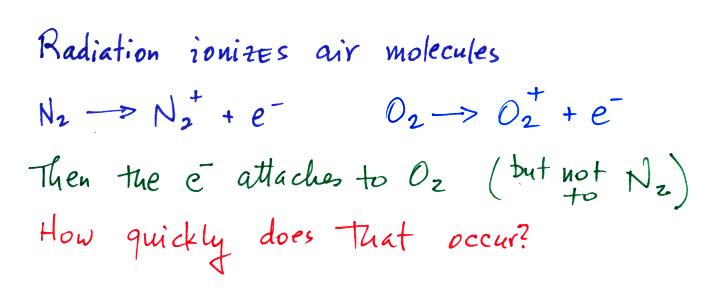
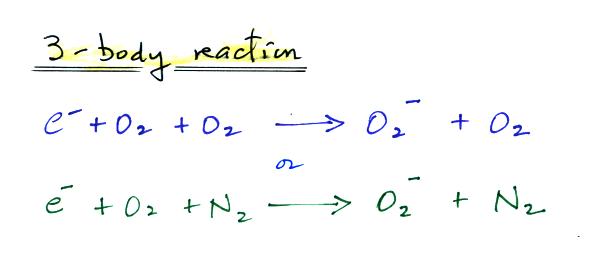
The corresponding reaction rate equations are (the [square brackets] denote concentration)
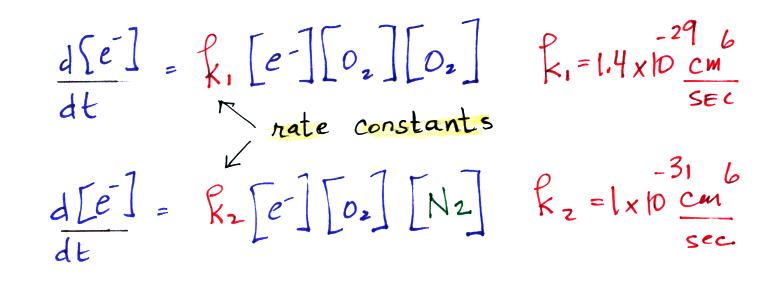

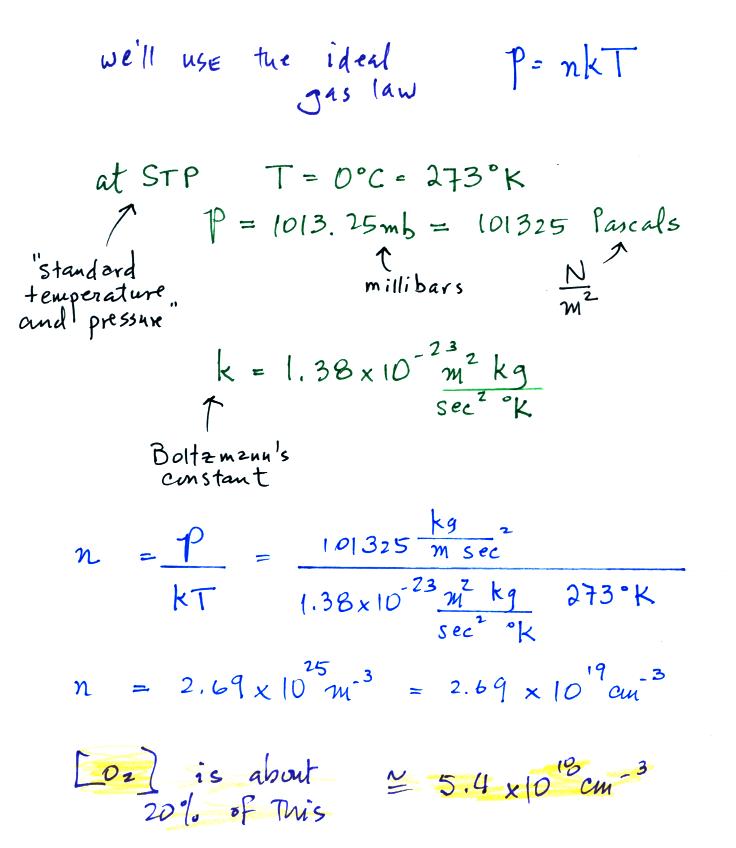
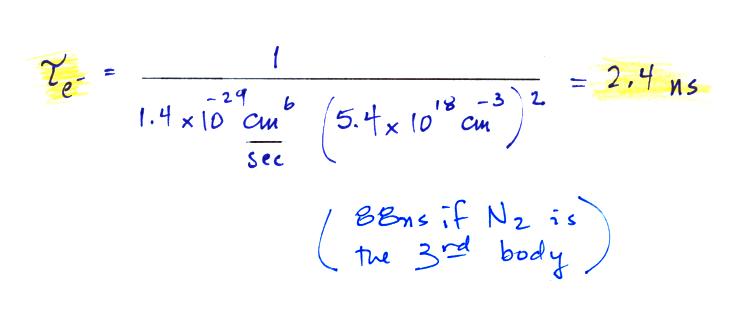
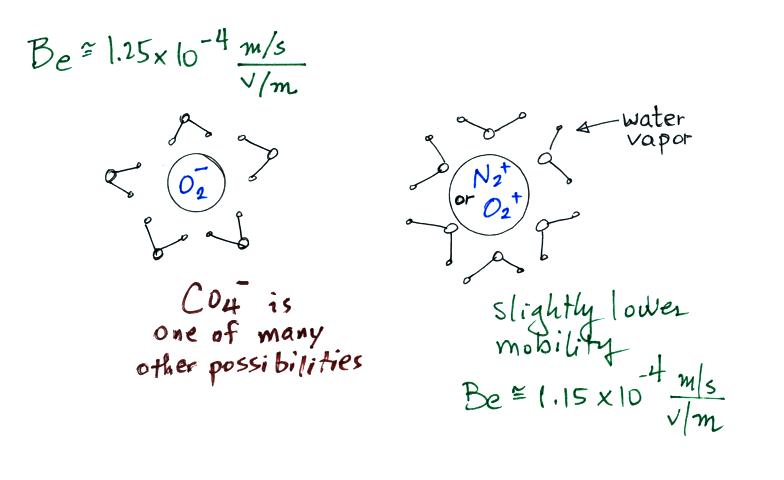
The next step in small ion formation is clustering of a chemical species of some kind around the positively and negatively charged ions. This occurs on a millisecond time scale. In the figure above we show ionized nitrogen and oxygen molecules. This is just one possibility. CO4- is apparently one of the more common ions found in the centers of these molecular clusters also. And something other than water may envelope the central ion.
The mobilities of positively and negatively charged small ions are slightly different. Typical values are shown above. The positively charged small ions have a slightly higher mobility (slightly lower drift speed) than the negatively charged ions.
What happens to the small ions once they are created? How long do they survive? For that we need an ion balance equation.
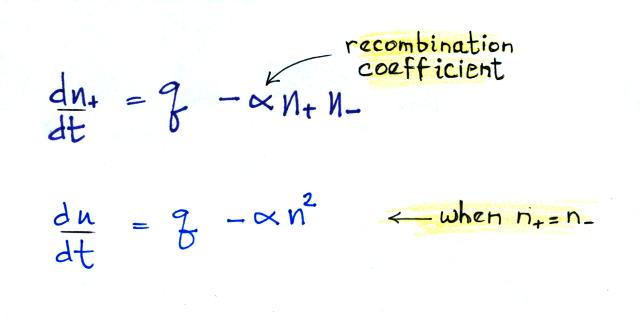
The concentration of small ions (the positively charged ions are considered in the first equation) will depend on the ion production rate, q, and the rate at which ions recombine and neutralize each other. A simpler version of the equation can be written if we assume that the concentrations of positive and negative small ions are equal.
The next figure gives the general and steady state solutions to the ion balance equation.
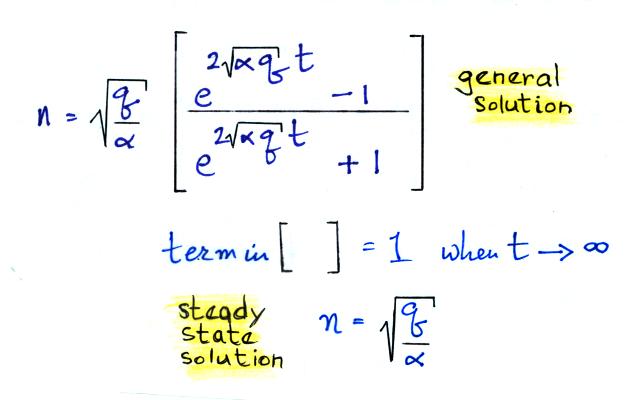
We get the steady state concentration as t goes to infinity. At steady state, dn/dt is zero so here's a shorter, easier way of detemining the steady state solution.
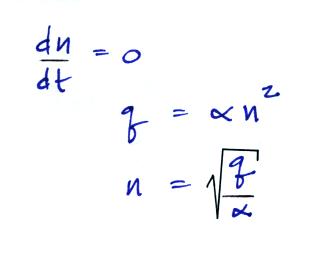
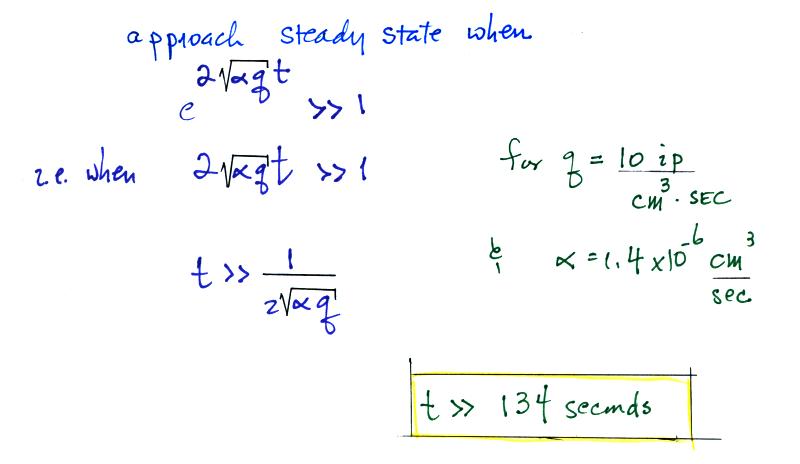
The 2√(αq) t term doesn't really need to be very big before you start to approach steady state.
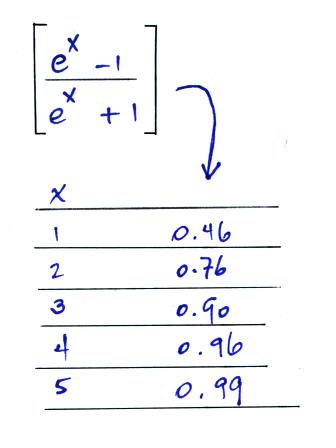
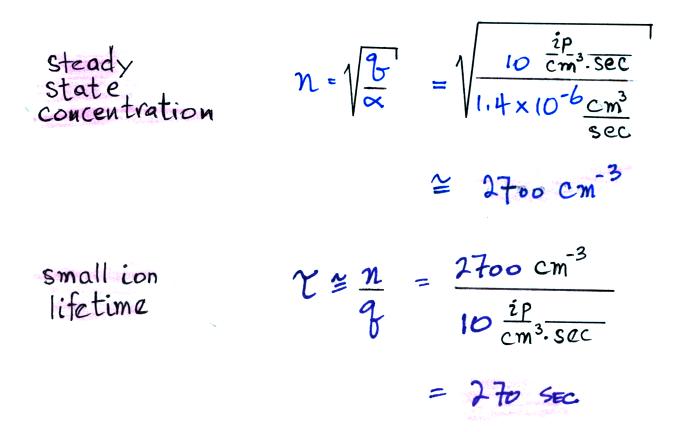
We can also estimate the conductivity (remembering that both positive and negative small ions contribute to the conductivity and taking into account that the positive and negative small ions have slightly different electrical mobilities). We assume that the small ions carry a single electronic charge.
